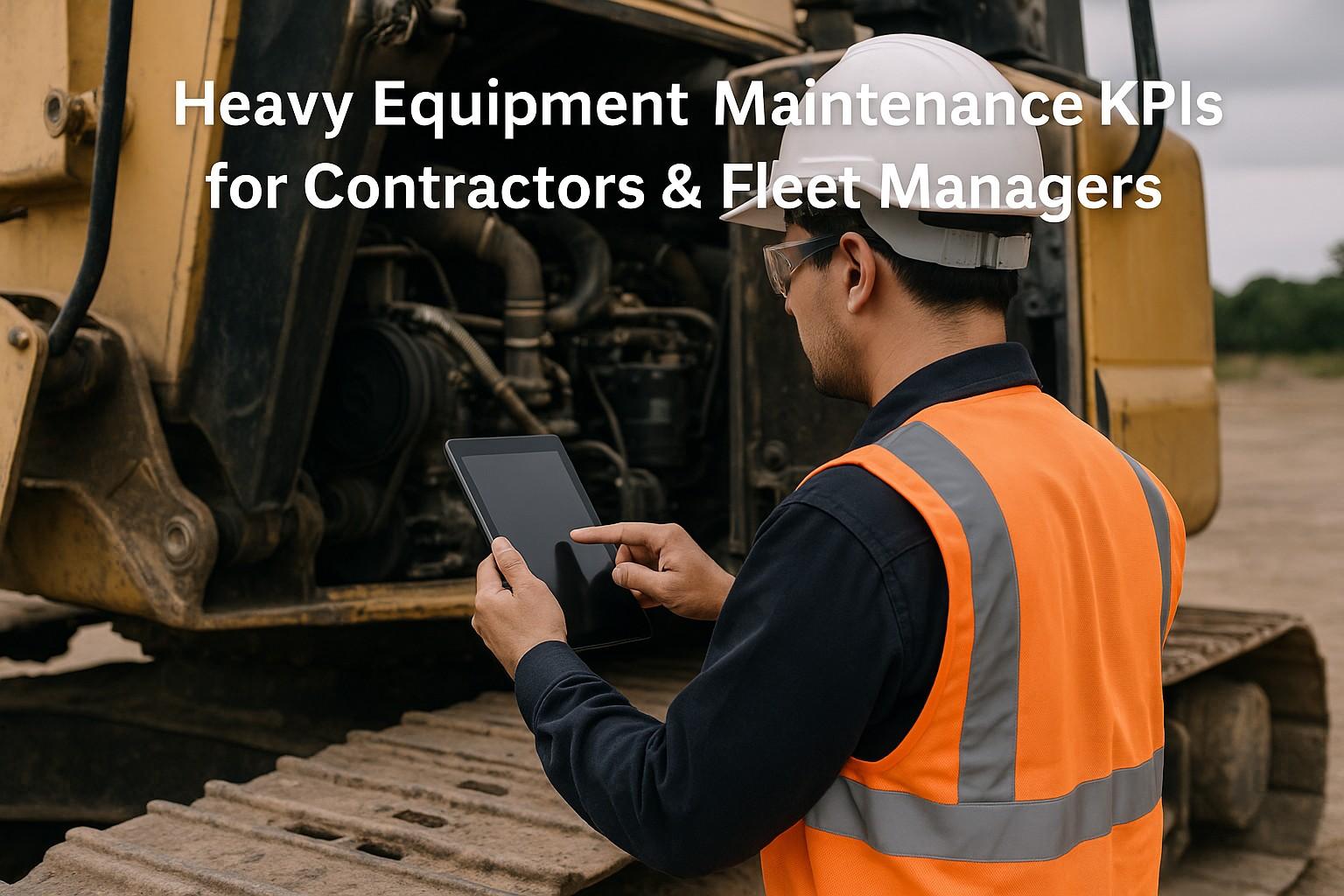IoT-enabled fleet management transforms construction equipment operations, with smart technologies reducing operational costs by 35% and increasing equipment uptime to 94% compared to traditional management approaches. Indian construction companies operating IoT-connected fleets report average savings of ₹12.5 lakhs annually per machine through predictive maintenance, fuel optimization, and enhanced operational efficiency. With over 3.2 lakh heavy construction vehicles across Indian infrastructure projects, implementing smart fleet technologies isn't just about modernization—it's about gaining competitive advantages that can improve profit margins by ₹3-6 lakhs per machine annually.
This comprehensive guide explores cutting-edge IoT fleet management solutions that eliminate 78% of unplanned downtime, reduce fuel consumption by 22%, and generate annual savings of ₹4.2 lakhs per machine through intelligent monitoring, predictive analytics, and automated fleet optimization. More importantly, it demonstrates how smart fleet technologies transform reactive equipment management into predictive operational excellence that ensures project delivery, regulatory compliance, and maximum asset utilization.
IoT Fleet Management Impact
Ready to Transform Your Fleet with Smart IoT Technology?
Discover proven IoT solutions that unlock significant operational improvements and cost savings.
The Smart Fleet Revolution: IoT-Powered Equipment Management
Modern construction fleet management leverages Internet of Things (IoT) technologies to create comprehensive equipment monitoring ecosystems that provide real-time visibility, predictive analytics, and automated optimization capabilities. Smart fleet technologies integrate GPS tracking, sensor networks, telematics systems, and cloud-based analytics platforms to transform traditional equipment management into data-driven operational excellence that maximizes equipment performance while minimizing total cost of ownership.
Core IoT Technologies for Smart Fleet Management
Effective IoT fleet management integrates multiple technology layers including edge computing devices, wireless communication networks, cloud analytics platforms, and mobile applications that create seamless data flow from equipment sensors to management systems. These integrated technologies enable real-time monitoring, predictive analytics, and automated response capabilities that optimize fleet performance while reducing operational complexity.
Modern IoT architectures support scalable deployment across diverse equipment types and operational environments, with robust connectivity options including 4G/5G cellular, satellite communications, and edge computing capabilities that ensure reliable data transmission even in remote construction sites.
- ✓ Edge Computing Devices with local processing capabilities, real-time analytics, and autonomous decision-making
- ✓ Multi-Sensor Networks monitoring temperature, pressure, vibration, fuel levels, and operational parameters
- ✓ GPS and Telematics Systems providing location tracking, route optimization, and operational analytics
- ✓ Cloud Analytics Platforms using AI and machine learning for predictive insights and optimization
- ✓ Mobile Applications enabling field technician access, real-time updates, and remote monitoring
- ✓ Integration APIs connecting with existing ERP, maintenance, and project management systems
Advanced Analytics and Predictive Intelligence
IoT fleet management transcends basic monitoring to deliver advanced analytics capabilities that predict equipment failures, optimize operational efficiency, and enable data-driven decision-making across all fleet management activities. Machine learning algorithms analyze historical performance data, operational patterns, and environmental factors to generate actionable insights that improve equipment reliability and operational profitability.
Predictive analytics platforms integrate multiple data sources including equipment sensors, weather data, operational schedules, and maintenance history to create comprehensive equipment health models that forecast optimal intervention timing and resource allocation for maximum operational efficiency.
- ✓ Predictive Maintenance Algorithms forecasting component failures 4-8 weeks before occurrence
- ✓ Fuel Optimization Analytics reducing consumption by 20-25% through intelligent route planning
- ✓ Operator Performance Monitoring improving productivity by 30% through behavior analysis
- ✓ Equipment Utilization Analytics maximizing asset efficiency and reducing idle time costs
- ✓ Environmental Impact Monitoring ensuring compliance and sustainability objectives
- ✓ Cost Analysis Dashboards providing detailed operational expense tracking and optimization
Implementation Strategy for Maximum ROI
Successful IoT fleet management implementation requires a phased approach that demonstrates immediate value while building toward comprehensive fleet optimization capabilities. The recommended deployment timeline spans 8-12 months with priority given to high-impact applications that provide quick wins and justify continued investment in advanced analytics and integration capabilities.
Strategic implementation focuses on scalable technology platforms that grow with operational needs and accommodate future equipment additions without requiring complete system replacement. The total cost of ownership analysis strongly favors early adoption, with payback periods typically ranging from 12-18 months through reduced downtime, improved efficiency, and optimized maintenance costs.
- ✓ Install basic telematics and GPS tracking systems with ₹25,000-35,000 investment per machine
- ✓ Deploy essential sensor networks for engine, hydraulic, and fuel monitoring capabilities
- ✓ Establish cloud-based data collection and basic analytics dashboards
- ✓ Implement mobile applications for field technician access and real-time monitoring
- ✓ Train operators and maintenance teams on IoT system operation and data interpretation
- ✓ Establish baseline performance metrics and begin data collection protocols
- ✓ Deploy comprehensive sensor networks with ₹45,000-65,000 per unit investment
- ✓ Implement predictive analytics platforms with machine learning capabilities
- ✓ Integrate with existing ERP, maintenance management, and project planning systems
- ✓ Deploy automated alert systems and workflow management capabilities
- ✓ Establish advanced analytics dashboards with predictive insights and recommendations
- ✓ Create performance optimization protocols based on data-driven insights
Measuring Success: Essential KPIs for IoT Fleet Excellence
Effective IoT fleet management requires continuous measurement and optimization based on quantifiable performance indicators that demonstrate operational improvement and return on investment. These metrics enable data-driven decision-making and justify continued investment in advanced fleet management technologies and capabilities.
Investment in IoT fleet technologies provides protection against operational inefficiencies and ensures competitive positioning in an increasingly technology-driven construction industry. The performance improvements are measurable within weeks of deployment, with full financial benefits typically realized within 12-18 months of comprehensive implementation.
- ✓ Equipment Availability Rate targeting 95%+ uptime compared to industry average of 75-80%
- ✓ Fuel Efficiency Improvement achieving 20-25% reduction in consumption per operating hour
- ✓ Maintenance Cost Optimization reducing total maintenance expenses by ₹3-5 lakhs annually per machine
- ✓ Predictive Accuracy Rate achieving 90%+ accuracy in failure prediction and maintenance timing
- ✓ Operator Productivity Enhancement improving efficiency by 25-35% through behavior optimization
- ✓ Unplanned Downtime Reduction to less than 3% of total operating hours
Connectivity Solutions and Data Security
IoT fleet management requires robust connectivity infrastructure that ensures reliable data transmission across diverse operational environments including remote construction sites, urban projects, and challenging terrain conditions. Modern fleet management platforms support multiple connectivity options including cellular networks, satellite communications, and hybrid edge-cloud architectures that maintain system functionality even with intermittent connectivity.
Data security represents a critical consideration for IoT fleet implementations, with comprehensive cybersecurity protocols protecting sensitive operational data and preventing unauthorized access to fleet management systems. Advanced encryption, secure authentication, and network isolation technologies ensure data integrity while enabling seamless integration with existing business systems.
Maximizing ROI Through Smart Fleet Technology Investment
The implementation of comprehensive IoT fleet management represents more than technological modernization—it's a strategic investment in operational excellence that positions Indian construction companies for significant competitive advantages in an increasingly demanding market. The financial benefits extend beyond immediate cost savings to encompass improved project delivery capabilities, enhanced equipment value retention, and superior operational reliability.
Indian contractors who embrace IoT fleet technologies achieve measurable improvements in equipment performance, operational costs, and project profitability. Conservative estimates suggest total ROI exceeding 400% within three years of full implementation, with immediate benefits visible within the first operating quarter following deployment.
The construction industry's digital transformation demands proactive adoption of proven IoT technologies that deliver measurable operational improvements. Fleet operators who implement smart fleet management today will be best positioned to capitalize on emerging opportunities while avoiding the costly consequences of outdated management approaches that limit operational efficiency and competitive positioning.
Transform Your Fleet Operations with Smart IoT Technology
Start implementing cutting-edge IoT solutions and join India's most successful construction companies.
Book a Demo
.png)



